At last I have found something really exciting.
I have dragged Fizz up to look at some old Sweet Chestnut coppice and she isn’t over excited because we have to walk on the road and there isn’t any playing ball as we go.
It is okay once we reach the wood.
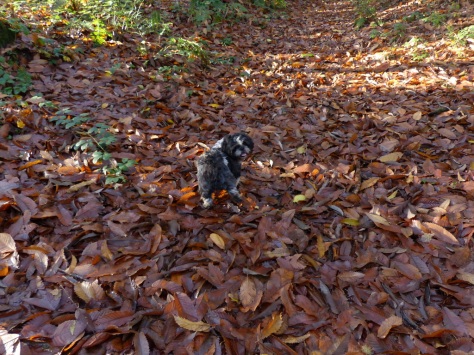 The floor is thick with the Sweet Chestnut leaves. These leaves contain toxins that inhibit the growth of other plants but some things do well here and we will have a look at them when we return tomorrow.
The floor is thick with the Sweet Chestnut leaves. These leaves contain toxins that inhibit the growth of other plants but some things do well here and we will have a look at them when we return tomorrow.
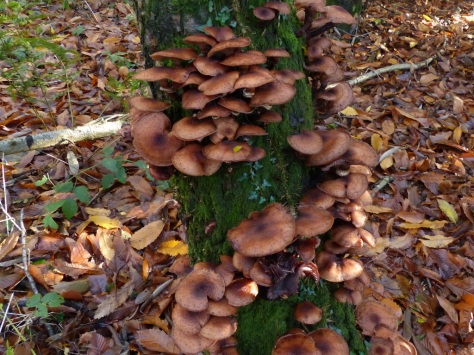 Armillaria ostoyae. It is the same Honey Fungus that used to grow in woodland that I owned some years ago.
Armillaria ostoyae. It is the same Honey Fungus that used to grow in woodland that I owned some years ago.
I wrote a post about it recently About Honey Monsters using pictures that I had taken years ago. I am excited to have the opportunity to photograph it again and that is why we are going back for another look tomorrow.
When I saw it today I had a good idea what it was but I couldn’t get proper confirmation until I got home, it has been a few years since I found one of these. There are some key identification features that I still want to photograph and we could eat it.
I probably won’t eat it just because I like to see it on the tree but I will try a little bit just to see if I have a reaction and then I can eat it next time. You should always try a little bit first if you haven’t eaten a species before.
Here are some of the pictures that I took today.
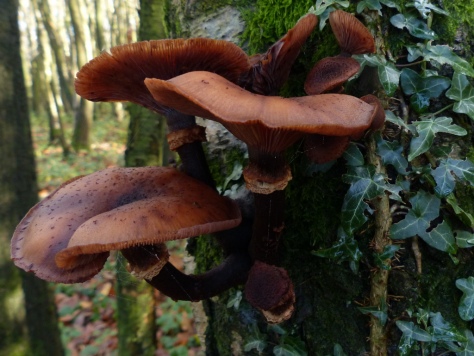 It’s a tree. Somebody tell him it’s a tree, we’ve got things to play.
It’s a tree. Somebody tell him it’s a tree, we’ve got things to play.
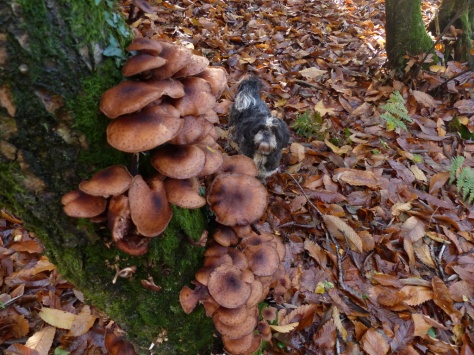 Sensing that my companion was somewhat less enthusiastic about mushrooms than I was, I dragged her off to a field for some playtime.
Sensing that my companion was somewhat less enthusiastic about mushrooms than I was, I dragged her off to a field for some playtime.
We are at the top of he hills now and the fields are dry, close cropped and full of sunshine.
Happiness is round and yellow.




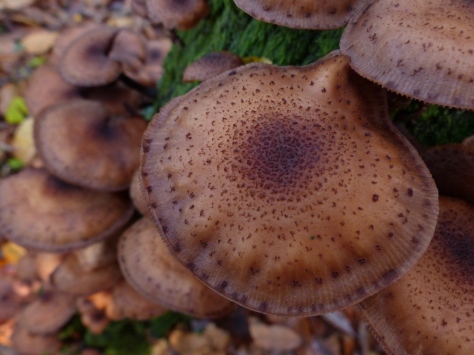
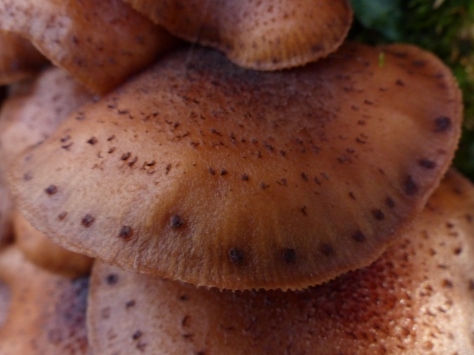

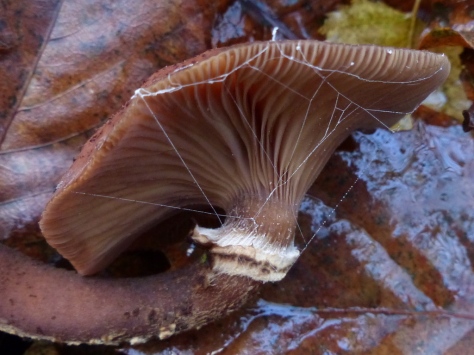
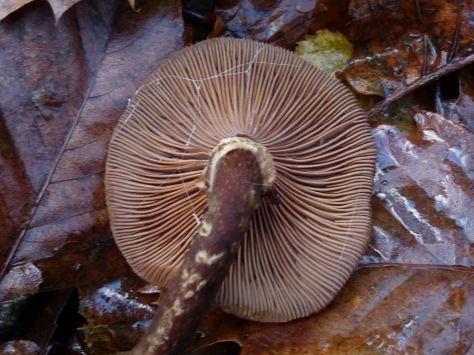
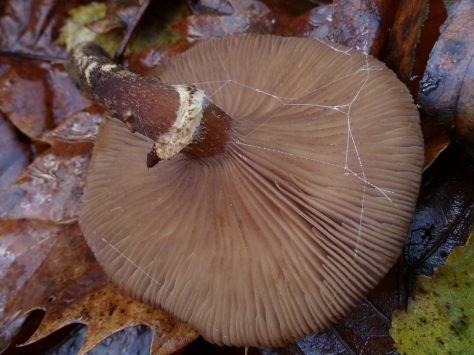
Mushrooms always remind me of the Fairy World 🙂 I like to look at them in the forest, I very rarely eat them. I like the last sentence: Happiness is round and yellow 🙂 🙂 🙂
LikeLike
Thank you Trini 🙂
LikeLike
For over a million years since Europeans came to Australia ( most from Britain) we have only ever eaten pale grey topped field mushrooms. All others were dangerous. Then the Greeks and Italians came and could be seen picking “toadstools” from under pine trees and we all laughed and said, “They’ll be sorry.” And we still only eat field mushrooms or ones we buy in Woolworths. We are a bit slow at times.
LikeLike
Thanks John 🙂 I like to take food from the wild but I don’t eat any significant amount. It just makes me feel closer to nature to know what I can eat and what I can’t.
LikeLike
You’d go pretty hungry around here.
LikeLike
What a good find, Colin. Very happy for you even if Fizz is indifferent. And very fine photos too.
LikeLike
Thank you Andrew 🙂
LikeLike
Gorgeous fungus. I loved the video of Fizz rolling on her ball.
LikeLiked by 1 person
Thanks Emily 🙂
LikeLike
I’ve never dared try eating a mushroom. I don’t know any edible species in Louisiana. Do you have many toxic ones in UK? Great post!
LikeLike
Oh, finally posted about my dog, Buzzy today, just so you know.
LikeLike
Buzzy is lovely. I would be a bit worried about getting him dirty though, not very practical for English mud 🙂 Just imagine what he would look like after a walk with Fizz 🙂 (Buzzy is a pure white American Eskimo dog with lovely long hair)
LikeLike
Thanks Ibeth 🙂 We don’t have a lot of really dangerous fungi but there are some bad ones. Most are just not worth eating or might give you a tummy upset. I don’t ever go foraging for mushrooms in general, I only take a few species that I know very well. I haven’t ever tried Honey Fungus and don’t even know if I will like it but it is one of the easier ones to identify so I think I will have a little taste 🙂
LikeLike
What a lovely mushroom. Fizz is adorable -how she loves that ball! Happiness is indeed round and yellow!
LikeLike
Thank you Eliza 🙂
LikeLike
Glad to see that you have had some sunshine at last. Fabulous fungus fotos!
LikeLike
Thank you Clare 🙂
LikeLiked by 1 person
“Happiness is round and yellow”…. I really like that.
We have one wild mushroom here, the Morel, that we would eat. My late husband, our daughter and I would harvest all of those we could find. They are delicious. We usually referred to them as corncobs, You can find them on Google.
Your presentation of fungus today is lovely.. And Fizz is a joy.
LikeLike
Those look like Alice in Wonderland mushrooms, something from a story book.:) Fizz had a good time after all. 🙂
LikeLike
Hi Colin. You seem to be very knowledgeable about fungi and as I am just developing an interest can you suggest a good reference book for identification? Hoping you can help 🙂
LikeLike